Shiraae is one of the basic dishes of Japanese cuisine, and is characterized by its smooth dressing and gentle taste of ingredients. There are many kinds such as Gomaae, Shiraae, Misoae and Umeae. Once you have learned how to make aegoromo seasoning, you can enjoy many variations by changing ingredients. This time, let’s find out about Shiraae, its history, recipes and where to buy.
What is Shiraae?
Shiraae is a sweet-flavored tofu salad in Gunma prefecture that looks like a white batter in which seasonings such as tofu, white sesame, and white miso are ground together and mixed with vegetables. Japanese used mushrooms, boiled vegetables, and konnyaku as their ingredients. Seasoning includes white sesame, white miso, light soy sauce, dashi stock, sugar, mirin, and salt. They often mix it with ingredients such as spinach, konnyaku, and carrots, and is popular for its gentle taste due to the tofu in it.
It is one of the popular small bowl dishes because it is low in calories but high in protein and has excellent nutritional value. In addition to the protein contained in tofu, you can also take vitamin C and dietary fiber from vegetables, so it is a very nutritionally balanced dish.
Etymology
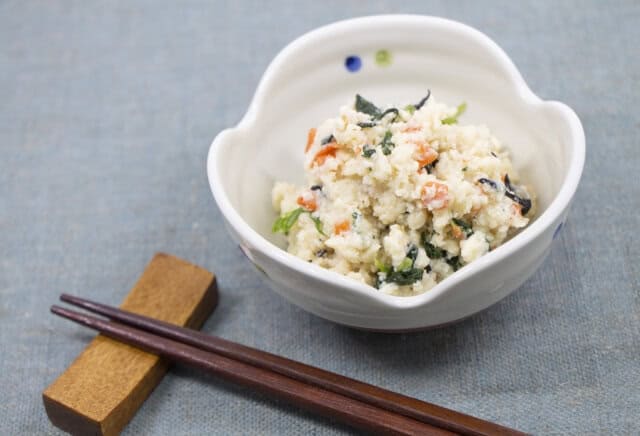
As we can tell by the name of this dish coming from the Japanese “Shira” meaning “white” and “ae” “to mix”, the tofu and tahini sauce is white in color and therefore this salad works well with a range of colorful, crunchy seasonal vegetables. Along with Shiraae, there is another word that is convenient to remember: Aegoromo. Aegoromo is read as “aegoromo” and is a combination of seasonings such as sugar, salt, vinegar, soy sauce, and miso, which are indispensable when making aemono, and ingredients that are easy to get entangled with ingredients such as richly flavored ingredients.
Shiraae History
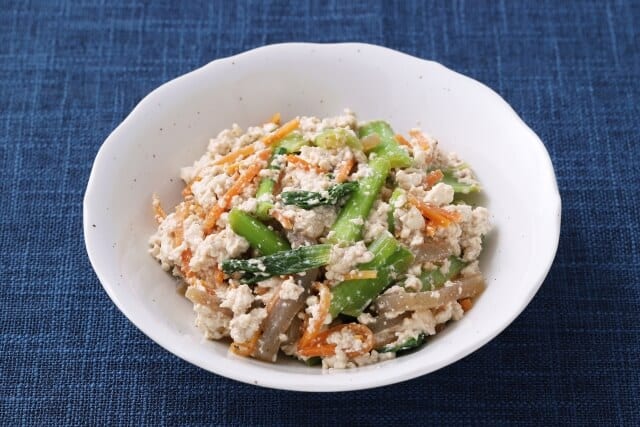
“Tofu Hyakuchin,” considered the pinnacle of tofu cuisine, debuted in 1782. This book became a best-seller, prompting the publication of “Tofu Hyakuchin Sequel” and “Tofu Hyakuchin Yoroku.” There are a total of 238 tofu dishes available. “Shirae” appears in the thirteenth episode of “Tofu Hyakuchin Extraroku.” It is, however, slightly different from the current method, and the tofu-to-white-miso ratio is 4:6. Tofu dishes are related to the Shojin cuisine served at temples, and it is difficult to imagine Shiraae arose as a result of the ingenuity and development of Zen temple Tenza.
Shiraae Recipe
Shiraae Ingredients
| Ingredients of Shiraae for 2-3 person | Measurements |
|---|---|
| Firm tofu | 350g |
| Spinach | 40g |
| Carrot | 20g |
| Konjac | 50g |
| Shimeji mushrooms | 70g |
| Dashi soup | 100g |
| Soy sauce | 33g |
| Mirin | 18g |
| Roasted white sesame | 7g |
| Sugar | 7g |
| Miso | 23g |
| Salt | 3g |
How to make Shiraae?
First, cut the cotton tofu into half the thickness and drain. Wrap it in kitchen paper, put a weight on it, and leave it in the refrigerator for 20 to 30 minutes. Cut the base of the spinach and wash off the soil. Also, cut the carrots into 3-4 cm long strips, and cut the konnyaku into thin strips.
Add about a teaspoon of salt, and when the water comes to a boil, add the shimeji mushrooms and boil for 40-50 seconds. Next, add the spinach and boil for about 1 minute, then drain into cold water. Finally, to remove the smell, boil the unseasoned konnyaku for about 1 minute and drain.
Combine dashi soup and soy sauce in a small pot, add the carrots and konnyaku, heat, and when it boils, reduce the heat and simmer for 3-4 minutes.
Only the white sesame can be crush finely with a food processor is ground separately in a mortar into a paste. Then, strain out the seasoned carrots and konnyaku. Using a spatula, gently mix the ingredients with the juice removed and the batter for the Shiraae sauce to complete the Shiraae sauce.
Types of tofu used in Shiraae
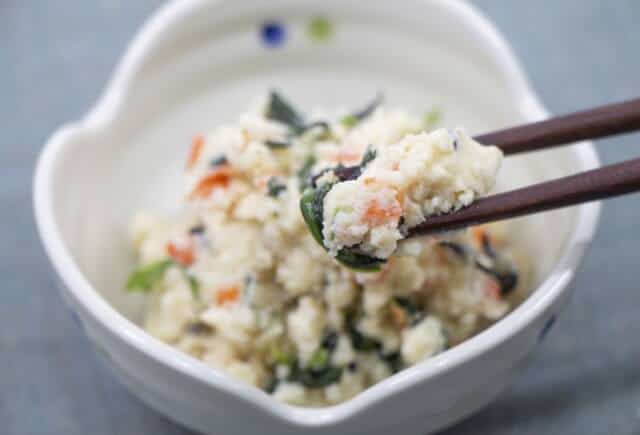
Shiraae has two types of tofu that Japanese locals use every time they make this dish – cotton tofu and silken tofu. If you want the texture and flavor of tofu to remain a little, you can use cotton, otherwise, you can use silk. Silken tofu and cotton tofu have different textures and taste due to the difference in the amount of water they contain, so locals use this according to their characteristics. Firm tofu does not break easily, so it is suitable for stir-frying or grilling. Silken tofu has a silky smooth texture recommended for eating raw.
Health information of Shiraae
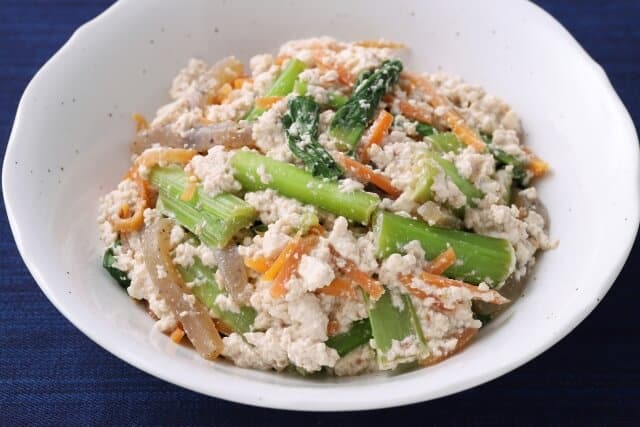
Tofu is the foundation of Shiraae, so you can take in the rich protein of tofu. Locals typically use spinach and hijiki as the ingredients for Shiraae, and other vegetables such as garland chrysanthemum and Japanese mustard spinach. In addition, by mixing it with various vegetables, it is a nutritionally balanced dish that allows you to take in the nutrients of vegetables such as vitamins and dietary fiber.
Various Shiraae dishes

Cabbage and Carrot with White Dressing
Shiraae with a good balance of sweetness and sourness is attractive. The secret lies in the honey plum. Heat the cabbage and carrots in the microwave and season with light soy sauce.
Mushroom Shiraae
It has the stickiness that you can’t find in the classic Shiraae sauce. They boil the crushed taro and add them to the soft tofu.
Avocado Shiraae
Uses avocado, which is rare as an ingredient for white sauce! Katsuobushi is indispensable for improving the umami and flavor. Seasoned with salt only. It doesn’t need to be season, so it’s perfect as a side dish.
Where to buy Shiraae
Shinjuku Kappou Nakajima (新宿割烹 中嶋)
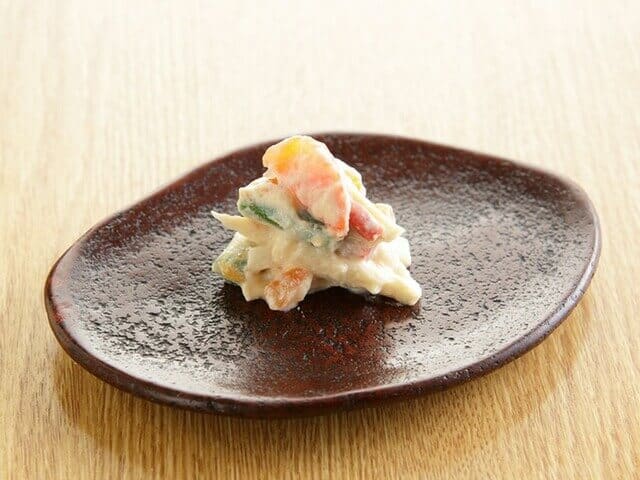
For a Michelin-starred restaurant, Nakajima serves possibly the cheapest lunch in town. While their kaiseki courses are priced upwards of ¥15,000 during dinner, you can enjoy the set lunches from a mere ¥880. These are substantial meals too, complete with rice, miso soup, pickles and tea. The secret to the surprisingly smooth texture is the addition of a small amount of fresh cream. The rich dressing wraps the mushrooms.
Kinkou (料亭金光 きんしゃぶ)
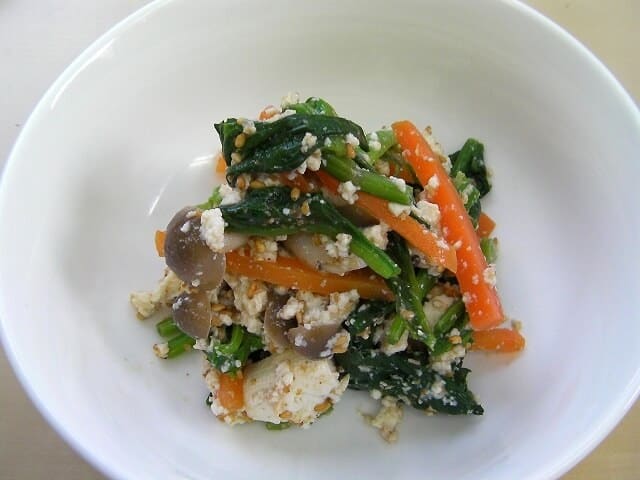
In addition to a la carte dishes, Ryotei Kinko offers course menus that use the most recommended seasonal ingredients for each season. They also offer a full-fledged course of Kyoto cuisine prepared by a chef who trained at a first-class restaurant in Osaka. Especially the shabu-shabu course is a popular course ordered by 80% of customers.
Ryoutei Komatsu (料亭 小松)
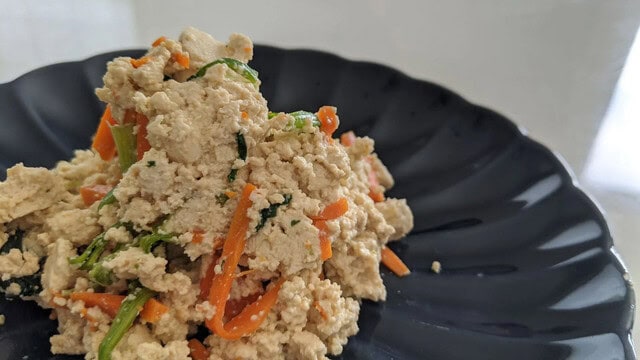
The taste of Komatsu is due to the relationship of trust with its suppliers and providers, which has not changed since its founding. From fresh fish to vegetables to alcoholic beverages. Every day, they purchase fresh ingredients from the Tokyo Central Wholesale Market and offer seasonal dishes including the Shiraae.
Takeaway
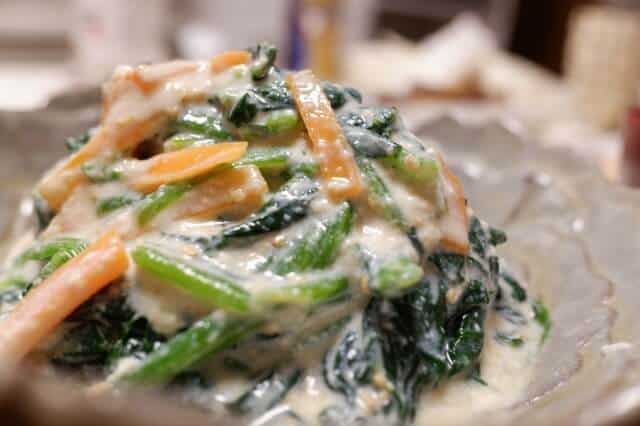
Tofu is a staple of the Japanese diet. It’s a common ingredient in miso soup, found in small cubes, and they consumed this almost every day this way. And because the Japanese is famous for inventing their own cuisines, they created shiraae. Shiraae or a mashed tofu salad is a Japanese plant-based salad made from mashed tofu, toasted sesame seeds, and various vegetables
You can try other vegetables dished from Japan like the Shiraae which is bountiful in nutrients, such as Goma Tofu, Yudofu, Hiyayakko, and Goya Chanpuru.

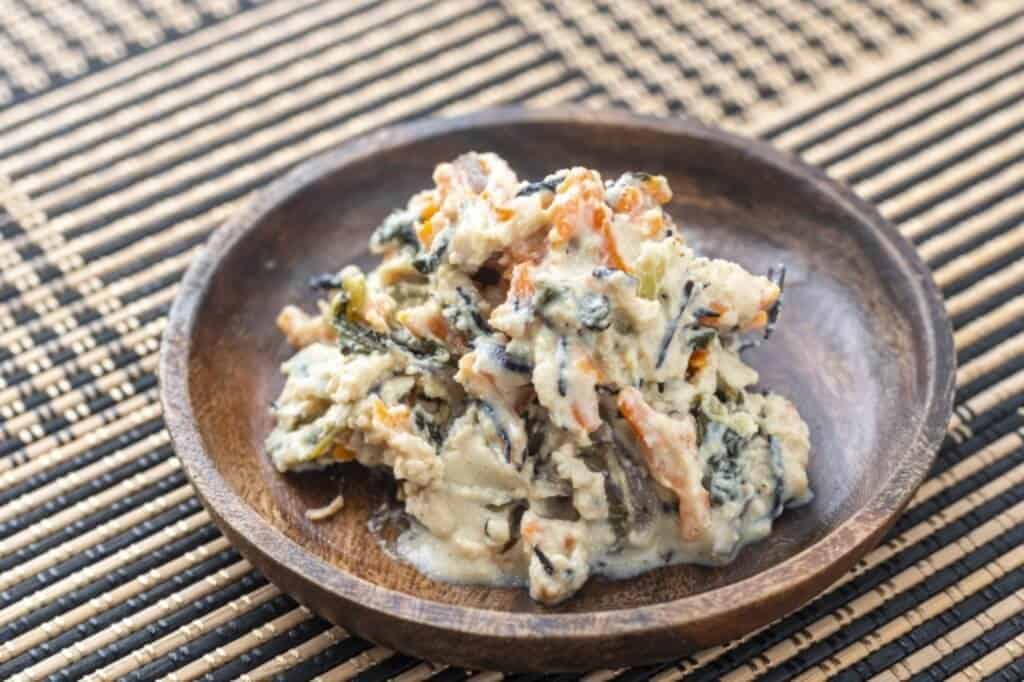
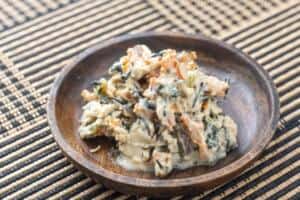
Comments